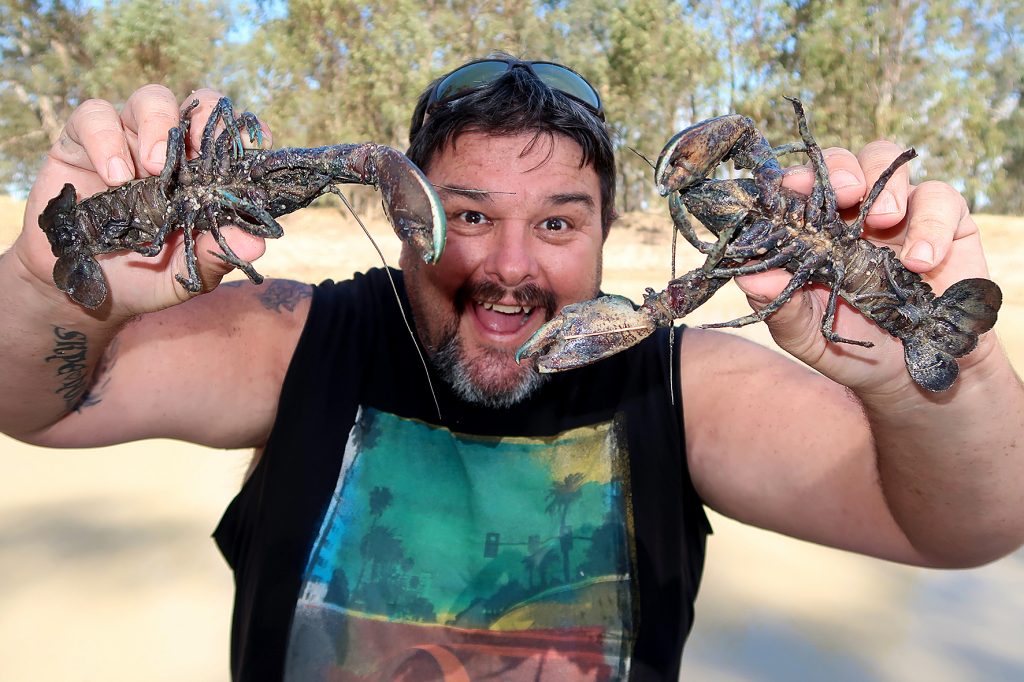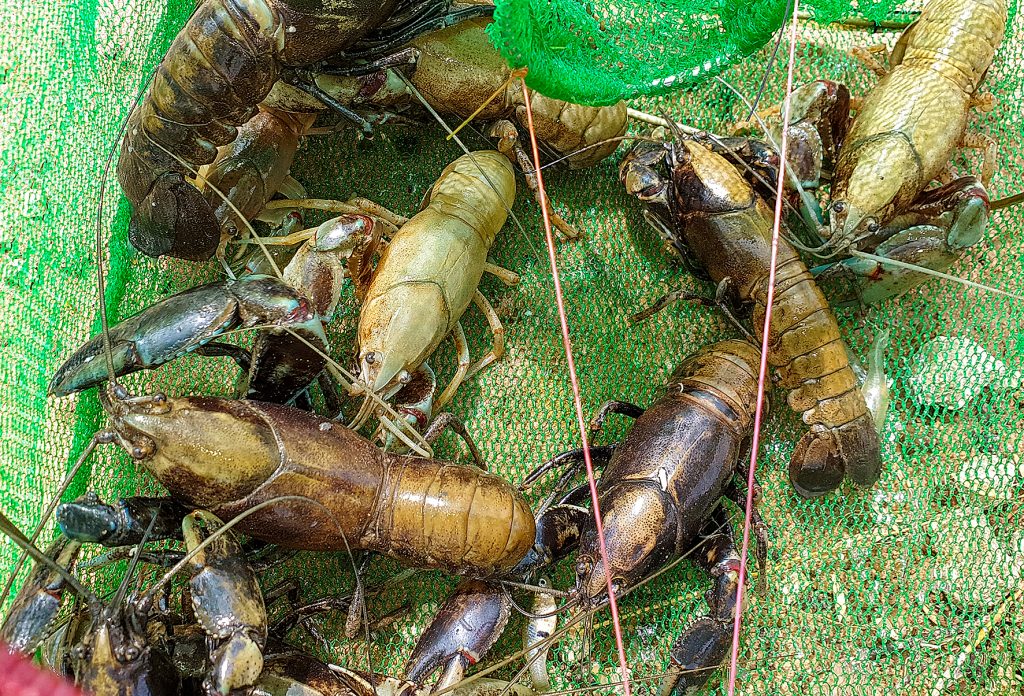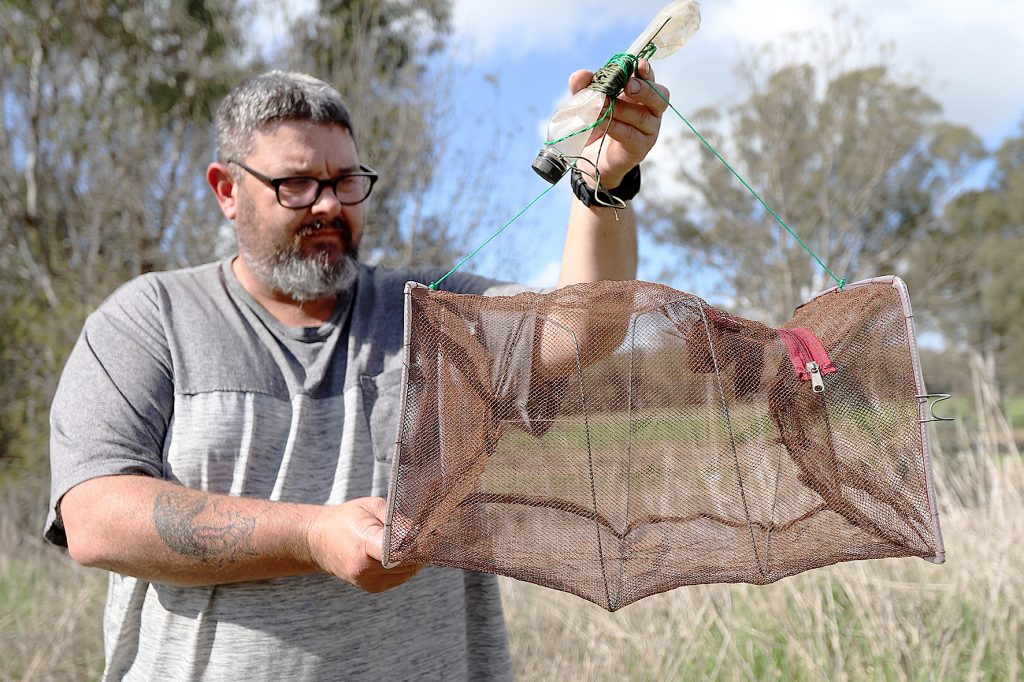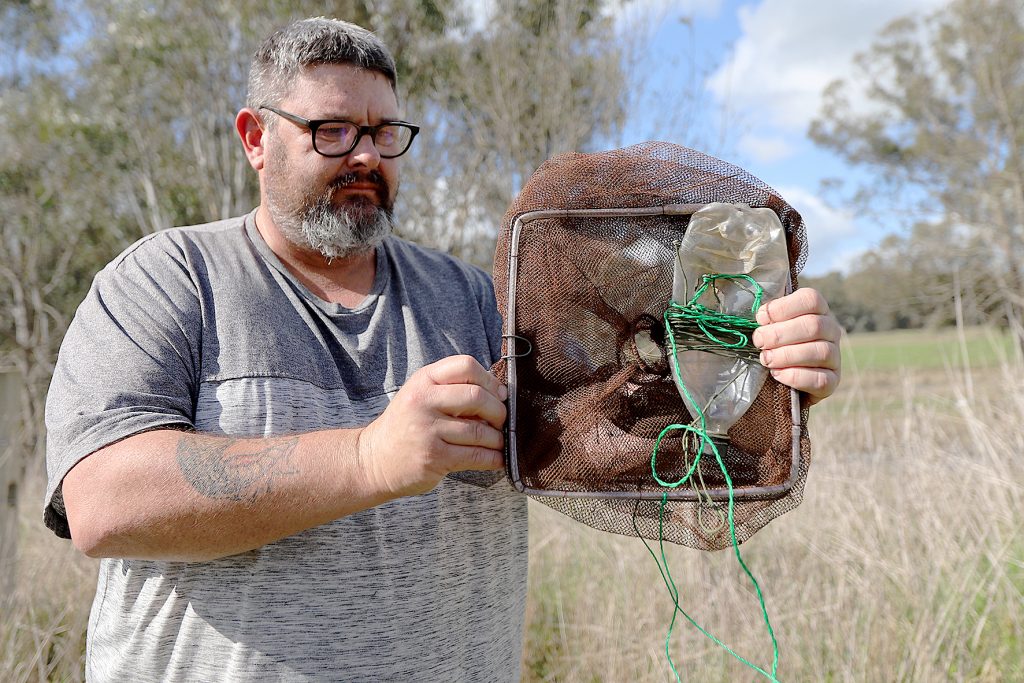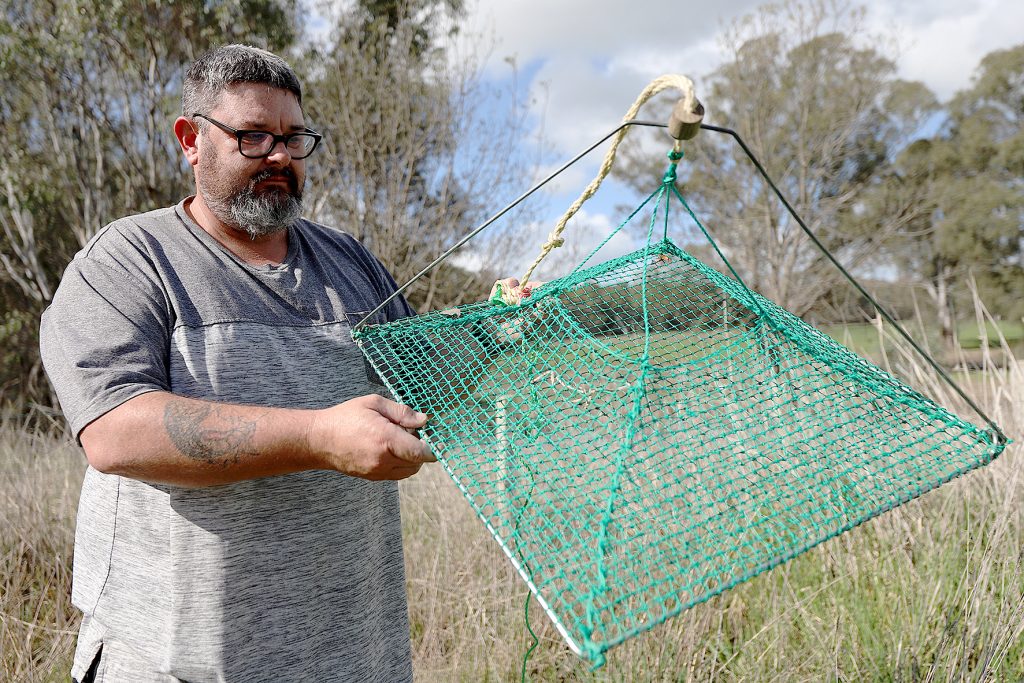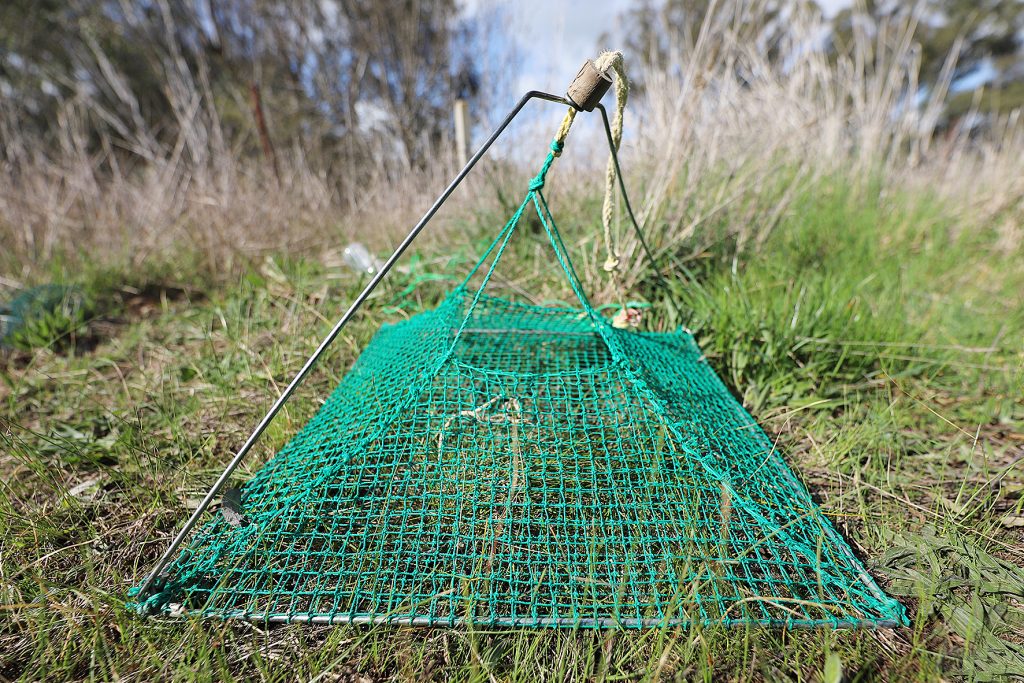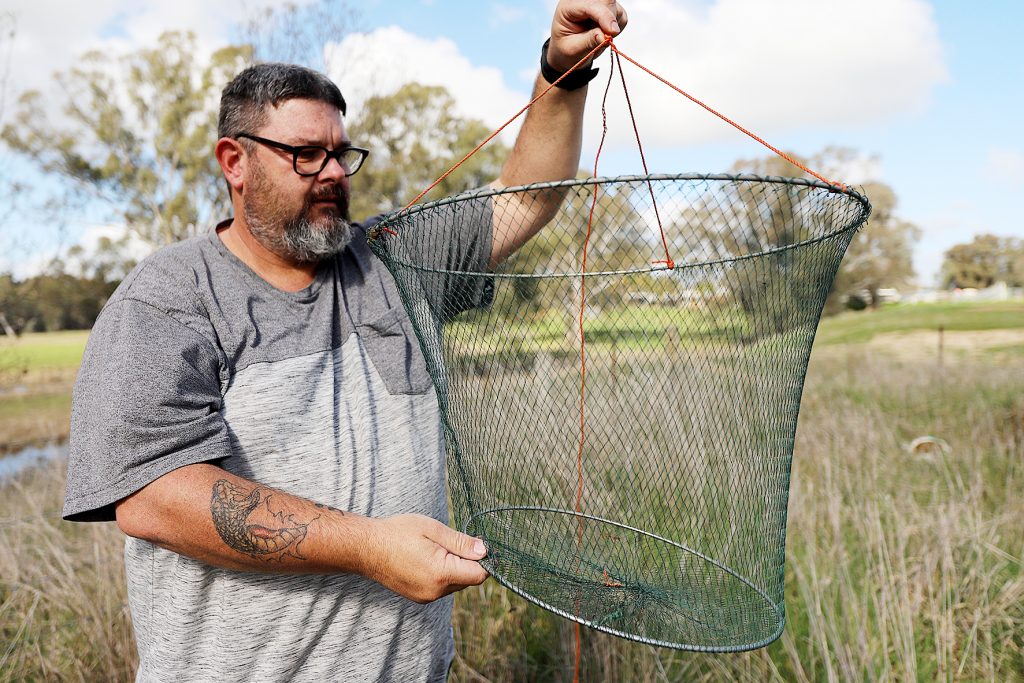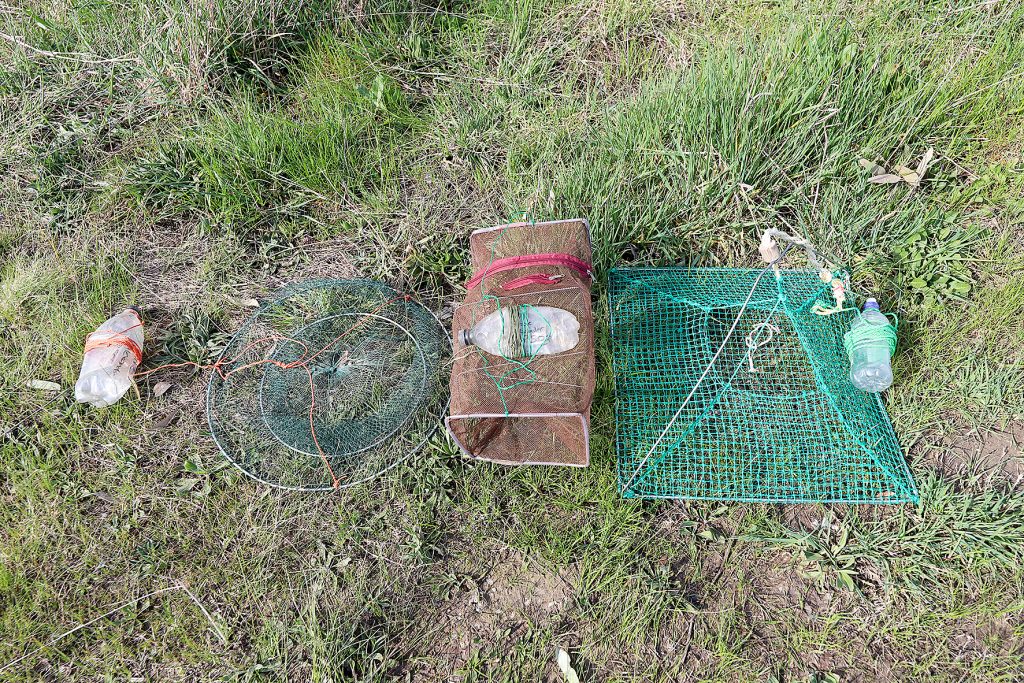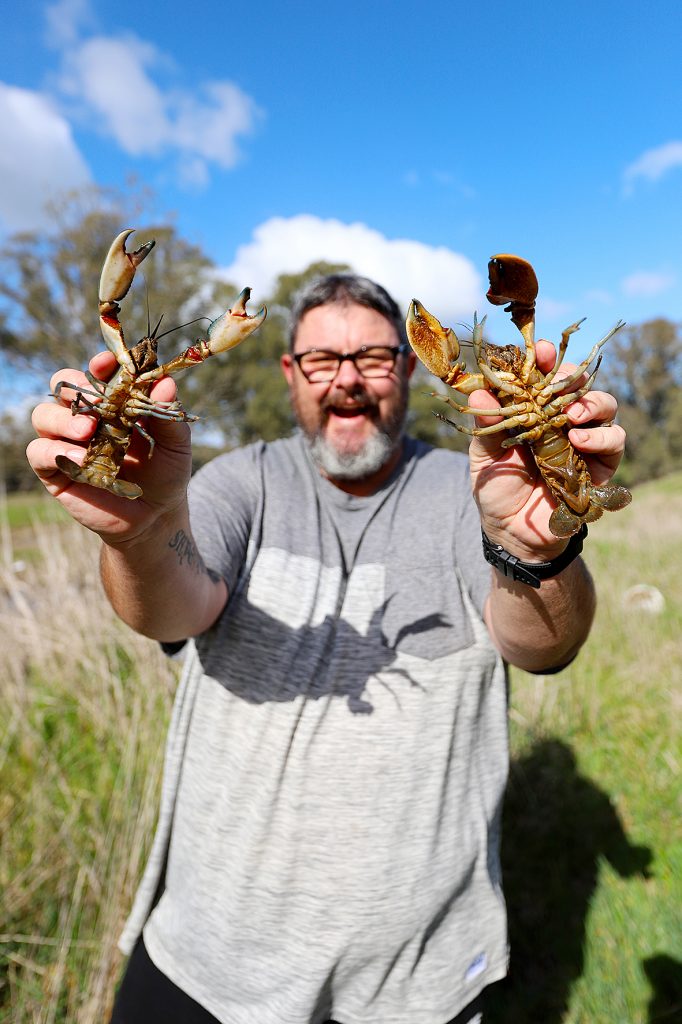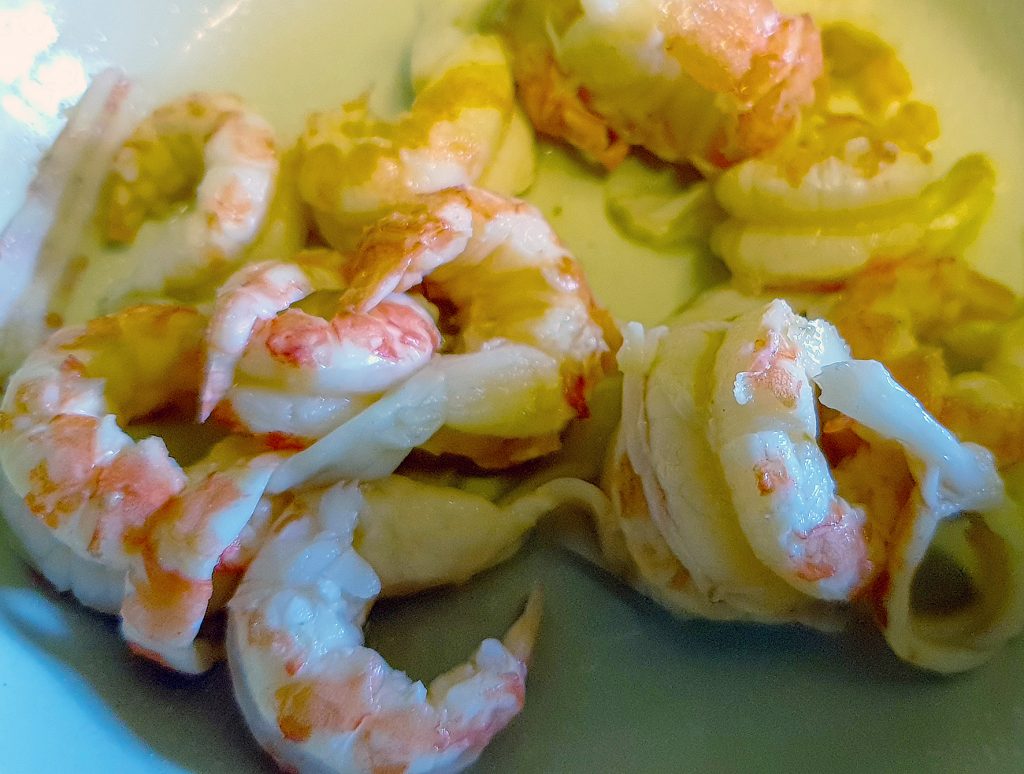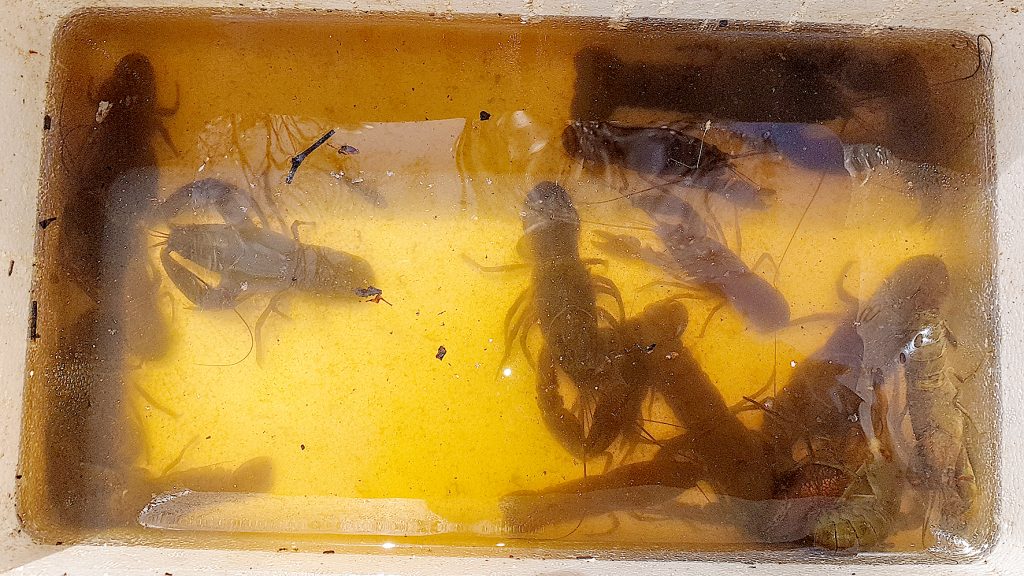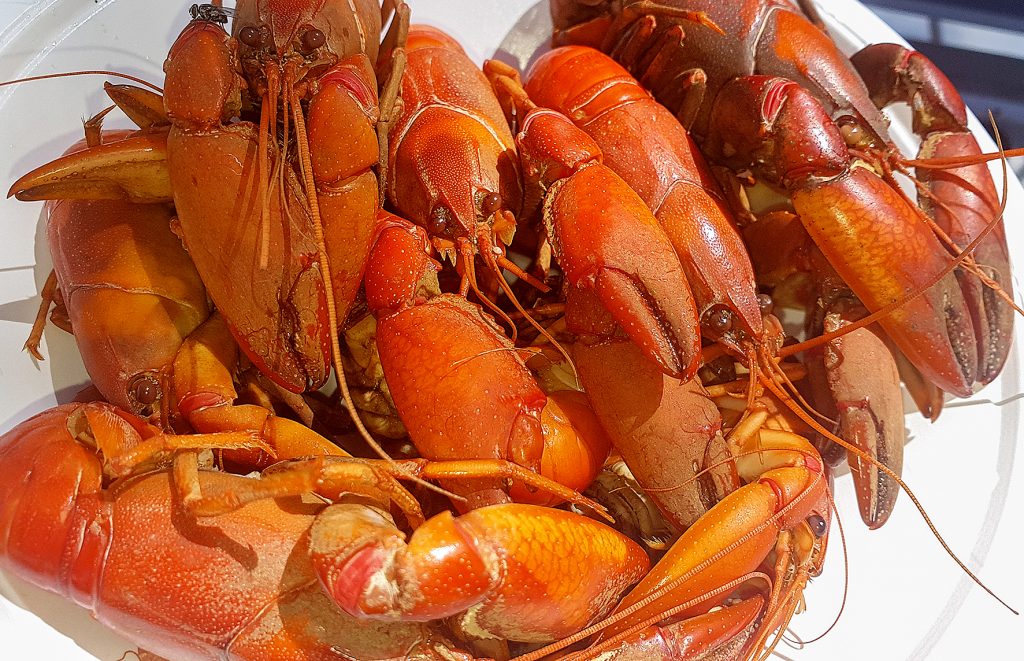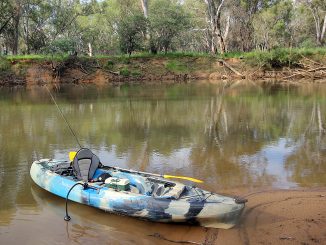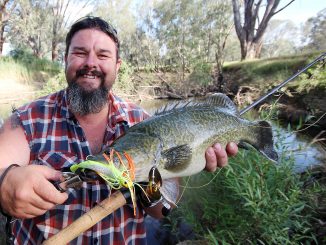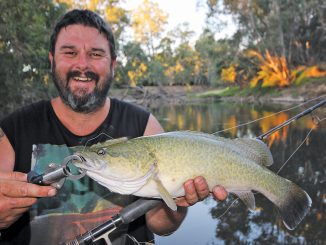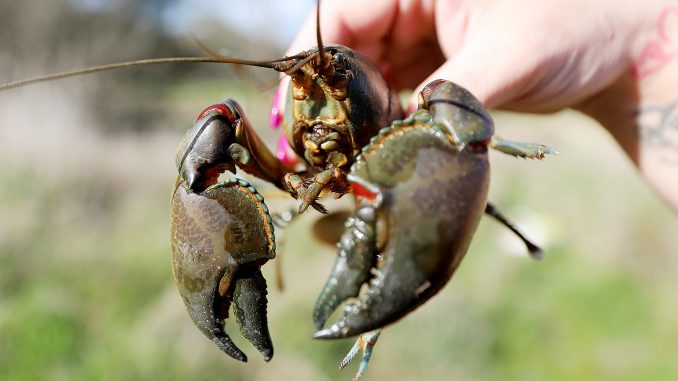
• by Robbie Alexander (first published October 2021)
“What the hell is a yabby?” This is a question that I get asked a lot on the yabbying videos on my YouTube channel, usually by people from other countries.
The word yabby comes from the word ‘yabba’, which was the name given to small crustaceans by the Aboriginal people, in particular the Wemba Wemba people who were believed to populate areas of the Murrumbidgee River catchment.
Although the name ‘yabby’ is most commonly used to described the common yabby, scientifically known as Cherax destructor, the name is often given to many other species, from the small sand yabbies on the east coast to very large marron in Western Australia.
In this article I will be focussing on the common freshwater yabby, otherwise known as the Cherax destructor.
Cherax Destructor
The common yabby has now been split into a couple of sub-species, sometimes called swamp yabby, broad clawed yabby or spanner yabby. To the untrained eye they are all much the same thing. They are small to medium freshwater crustaceans that are fun to catch, and much sought after for their amazing white, juicy meat that can only be described as an absolute delicacy.
Spring and summer are the best times to catch yabbies, but it is possible to catch them in winter too. This year (thanks to COVID lockdowns forcing me to think outside the box close to home) I have caught more winter yabbies than ever before. I find in winter that leaving nets in for long periods can result in a few yabbies here and there, as opposed to catching heaps of yabbies in a short timeframe in spring and summer.
Yabbies live in a range of water conditions, from fast-flowing clear water streams with a lot of oxygen, to filthy farm dams with little to no dissolved oxygen in the water. It is in these dirty dams that I tend to catch the most, and the biggest yabbies.
One of the greatest traits of yabbies is their ability to survive through drought conditions, including prolonged droughts. When their waterway dries up they will often burrow into the mud, digging down deeper and deeper as the drought drags on. They have been found as deep as 5m underground in extreme cases.
These crustaceans do not need to live in water to survive. They just need their gills to be damp. During these tough conditions, their breathing will slow right down to a bare minimum as they enter a survival mode. By conserving energy in this way, they can survive lengthy periods without eating.
Once the rain returns and the waterway fills back up, the yabbies will come back out of their holes and move freely around the water again….and hopefully into my well-placed net.
Catching yabbies
There are a number of ways to catch yabbies. From nets (which I will go into shortly), to rolling over logs in muddy swamps, and hand lines, commonly called the ‘meat and string’ technique. There are also differing rules from state to state around the types of nets, and ways to catch yabbies, so it pays to always keep up to date with the rules in your state.
Meat makes excellent yabby bait, particularly bloody meat such as lamb’s fry. Fatty meat such as lamb off-cuts is also very good. I often use venison which works well, and occasionally rabbit.
One of my favourite baits is dried dog food. Goodo’s are excellent bait; a bag of Goodo’s lasts a very long time, is cost effective and the yabbies love it. In nets with bait pouches you can just put the dog food in and zip up the pouch, although in nets without bait pouches you will need to buy a stocking to put the dog food in.
I have also had great success with tinned tuna. Just poke a few holes in the tin and tie it in the net and it works a treat.
On one occasion when I forgot my bait, I found a few squeezy sachets of tartare sauce in my car so squeezed them into the bait pouch and even that worked well. I caught a heap of yabbies on squeezed tartare sauce sachets.
After being encouraged for a long time to try using soap as bait, I gave it a go. It was terrible. I only caught one yabby in the soap net, while catching dozens in the net baited with meat only a few metres away. The only benefit that I found to using soap as bait was that I ended up with a very clean net!
Nets
There are a number of different types of nets that can be used to catch yabbies, but the rules vary from state to state so I strongly encourage you to check with your state fishing rules to ensure that the nets I mention below are legal.
• Opera house nets. These are totally illegal here in Victoria. They are prohibited from being used in ANY waters including both private and public waters. They were allowed in private farm dams, but because people just continued to use them in public waterways where they catch a lot of platypus and water rats, eventually they became outlawed. I suspect other states will eventually ban them if they haven’t already done so.
• Collapsible bait traps. These are my favourite nets. They fold like an accordion, and fold down to sit flat for storage. When opened they are a square net with a small hole at each end that the yabbies can climb into. The yabbies then become trapped, and it is hard for them to get out. Over time they can and often do find their way out, but it takes them a long time.
These nets have a bait pouch, making it easy to use any type of bait including dry dog food or a tin of tuna. Collapsible bait traps are best left in for long periods of time, making them ideal for ‘set and forget’ type yabbying. In places with a lot of yabbies I like to give them an hour in the water in between checks. In waterways with fewer yabbies, or in the cooler months, I usually just put them in and leave them there all night.
• Open top lift nets, usually called pyramid nets. Although these nets have been around for years, they really became popular here in Victoria when opera house nets were banned. The Victorian Fisheries Authority ran a hugely successful program where we could swap our old opera house nets for the new open top lift nets.
Personally, I love these nets and am a big fan, although I don’t think they are as effective as a ‘set and forget’ net as the opera house nets were. On the upside, turtles, platypus and water rats can easily get out of them if they end up in there.
With the open top lift nets, I like to give them anywhere between half an hour to an hour in between checking, depending on the waterway that I am yabbying in. The yabbies seem to be able to enter quite quickly, but can’t easily get out. They can, and will get out but it takes them quite a while to figure out how.
Due to the shallow depth of the nets, any bait that floats can make it easier for the yabbies to escape as the floating bait lifts them up closer to the top.
The other downside to the open top lift nets is the square mesh that they are made of. The holes are a lot bigger than they are on the bait traps, making it much harder to trap smaller bait-sized yabbies.
• Drop nets. Drop nets are the most exciting yabby nets. They are basically the same as a cray pot. They are designed to sit flat on the bottom so that the yabbies can walk into the net to get the bait, and can walk out equally as easily.
When these nets are checked, the sides come up, trapping the yabbies in the net, making these ideal for shorter checks. I usually leave my drop nets in for around 15-30 minutes depending on the waterway in which I am yabbying.
How to find a good yabbying spot
Yabbies can be found anywhere there is water in the Murray Darling catchment, from permanent lakes and rivers to small farm dams and even table drains on the side of the road.
I like to drive around and look for farm dams, particularly the ones with really dirty water in them. Yabbies love these dirty water dams. Look for a dam with filthy water with almost zero water clarity.
The next step, which is the most important step, is to go and knock on the land owner’s door and ask permission. Don’t just jump the fence without asking. That is trespassing and is illegal.
You can also try your local river or creek, or the nearby lake.
One thing that I have found is that in really clear water the yabbies tend to be more active at night time when there are no birds hunting, or down deep where they are out of reach of most birds.
Dirty water tends to yabby best during the day. That is just a personal observation, and as stated at the start, spring and summer seem to be the best times.
Storage
Storing yabbies is easy as they do not require aeration. You can store them in any form of container. A plastic tub, a foam container or even an old bath will do. The most important thing to remember is that they need to be able to breathe air. If you’re storing them on a foam container, they can climb the foam and stick their heads out of the water, but in plastic they can’t, so you need to ensure that the water is only just deep enough to cover their heads so that they can stick their heads out.
My favourite way to store them is in foam containers, but one thing worth mentioning is that they will burrow into the corners and eventually dig through the corners and escape as well as letting the water out. Keep your eye on the corners of the foam container, and once they start digging a small hole, place a marble or something similar in it and that will prevent then tunnelling out.
One last thing
I know I am repeating myself here, but PLEASE make sure you read the rules before you go yabbying. They change all the time, and vary from state to state. What might be allowed now might not be allowed at this time next year, and if a Fisheries officer catches you doing something wrong and you use the excuse “Robbie said we can do it this way”, they won’t buy it, because knowing and following the rules is your responsibility.

